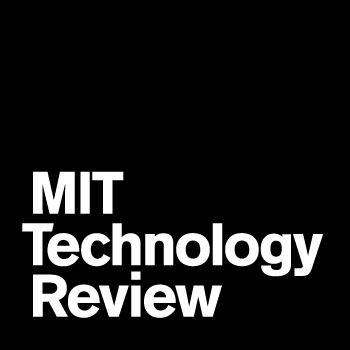Wednesday, August 7, 2013
By Yvonne Stevens
Four weeks ago in Washington D.C., European Union (EU) and United States (US) representatives began ardent negotiations toward what has been deemed by both sides to be a constructive and beneficial free trade agreement between the EU and the US. Reasons cited for the Transatlantic Trade and Investment Partnership (TTIP), as it is called, include significant economic gains by targeting sustained global economic restoration, job generation, competitiveness, and further economic development. Specifically, the TTIP seeks to promote more effective trade, transparency, and rapport by eliminating trade tariffs and reducing costs by harmonizing the standards, rules, and regulations of the two sides.
The European Parliament Resolution on EU trade and investment negotiations with the U.S. (text B7-0187/2013), promoting the move toward a more robust integrated transatlantic marketplace, endorsed the measure. However, in what has come to very likely be the most controversial issue (potentially sabotaging the new 21st century deal), the Resolution stressed that the TTIP “must not undermine the fundamental values of either side, for example, the precautionary principle in the EU” with respect to genetically modified organisms (GMOs). Indeed, this mandate was voraciously supported by Germany’s Chancellor, Angela Merkel who a few days ago stated that Europe will protect and preserve its restrictions in the TTIP negotiations with regard to GMOs.
The EU, for the most part, bans the import of GMOs, excepting certain crops used mainly for animal feed, and follows strict labeling procedures. The EU is not convinced that GMOs are safe for consumption despite established science (including the opinion of the EU’s own chief scientific advisor, who concluded that GM foods are as safe as conventional foods) that there is no biological material difference between conventionally farmed and cross-bred foods and those that have been genetically engineered for specific traits (see here for summary of key points in GMO debate). When it comes to risk assessment and management, the EU favors (and a number of member states legally require) evaluating the safety of GMOs by way of the precautionary principle (PP), a principle that has no clear definition and is, arguably, self-defeating and incoherent.
Gary Marchant, Regents’ Professor of Law and Faculty Director of the Center for Law, Science & Innovation at Arizona State University’s Sandra Day O’Connor College of Law, has written extensively on the PP’s limitations. He very recently co-authored and presented a paper on the topic, published by the Council for Agricultural Science and Technology, entitled Impact of the Precautionary Principle on Feeding Current and Future Generations (CAST Paper). Perhaps the most poignant excerpt from the Cast Paper is the claim that “the precautionary principle may well be the most innovative, pervasive, and significant new concept in environmental policy over the past quarter century. It may also be the most reckless, arbitrary and ill-advised.”
Marchant et al. discuss the different existing formulations of the PP, from the most stringent to the lesser, and note that if applied in its strictest sense the principle makes no sense—as it would prohibit GMOs because they give rise to risk while at the same time “forbid the forbidding” of genetic engineering because that, in itself, would create risk. Essentially, the PP “bans the very steps it mandates” because as the authors state, “there are risks from using the technology and also from not using it (therefore) precaution cannot be increased on one side of the question without decreasing itself on the other.”
A strict application of the PP does not weigh the benefits of innovation against the risks. It simply provides that where there is risk, one should not proceed. How much risk is required is not clear among the various definitions of the PP, stalling potentially beneficial and risk-reducing innovation because absolute or significant certainty cannot be established.
While the US recognizes a “precautionary approach” with regard to risk management of GMOs, it does not recognize a PP, thereby basing its health and safety decisions on scientific data, which does not require establishing the impossible standard of absolute certainty.
One of the greatest benefits of GMOs is they have the potential to address the issue and concern of our ever-increasing worldwide population, which is expected to reach 9.1 billion by 2050. It is posited that conventional food production will not suffice and will need to be amped up to a degree that will require genetic engineering (and the assistance of other technologies) of foods in order to meet population demands.
Some have argued that the EU’s adherence to the PP is based on domestic protectionism, halting imports to protect and promote its own products. Others have advanced that the EU’s stance on GMOs stems from a need to appease the public, not science.
Related to GMOs, another obvious hurdle within the context of the TTIP is the EU’s strict traceability and labeling (anything above a 0.9% of approved GM ingredient threshold) requirements. These conditions may well relate to why public perception within the EU has demanded application of the PP: instead of being informative, labeling often relays a negative message and may instill fear in the consumer that GMOs are bad.
Interestingly, while the EU Resolution emphasizes that the TTIP must not undermine the PP, it also “calls on the US to lift its import ban on EU beef products, as a trust-building measure.” It will be interesting to see how this particular area gets negotiated given that when it comes to risk, EU beef has been shown to have resulted in illness and death (from “mad cow” disease), whereas GMOs have not.
The EU’s firm hold on the PP security blanket may result in the implosion of the TTIP altogether unless negotiators can establish acceptable, innovative solutions in order to move forward in a manner that limits the role of the PP within the TTIP. Whether the seemingly entrenched, yet reckless, EU risk assessment and management principles are barterable remains to be seen. Stay tuned for more developments as they arise.















